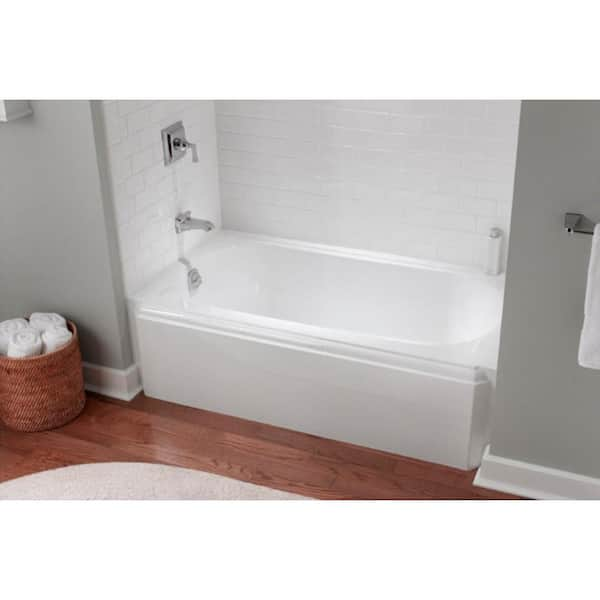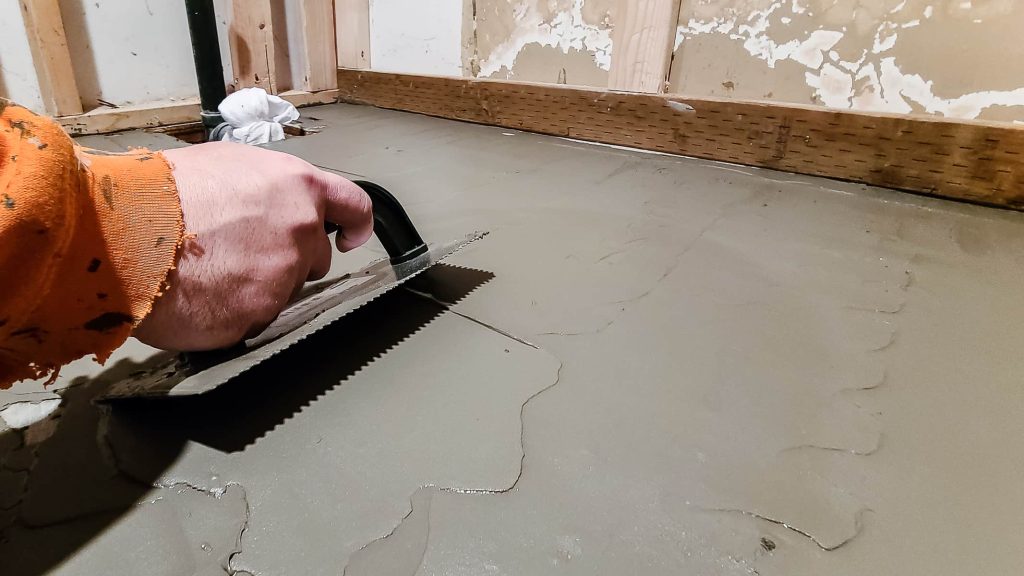Beginner's Plumbing: What You Need for Installing a Bathtub
Beginner's Plumbing: What You Need for Installing a Bathtub
Blog Article
Each person is bound to have their unique piece of advice in relation to How to Install a Bathtub Yourself.

Installing a bath tub isn't exactly brain surgery, but it does require strong plumbing, woodworking, as well as occasionally, tiling skills. Changing an old tub with a new one is also a moderately challenging job. If the old tub is readily accessible, the project can move quickly; if you have to open a wall surface to eliminate the old tub and place the brand-new bath tub, the task is a lot harder. In either instance, the job is within a house handyman's skills, although you will certainly need an assistant to leave the old tub and embeded in the new one. Make sure you have actually qualified on your own for the job and also are comfortable attempting it. Rather than hiring a contractor to take control of a halfway-completed project, it is far better to think about employing one prior to you begin. Possibilities are you may need a specialist plumber to make tube connections.
This write-up will assist you install a brand-new bathtub in your bathroom if you have currently gotten a brand-new tub as well as do not require to transform the setup of your previous water system pipes.
Your tools and material checklist should comprise the following:
Getting ready for the Installment
First of all, the supporting frame supplied with the bath must be fitted (if needed) according to the manufacturer's directions. Next off, fit the taps or mixer to the bath tub. When fitting the faucet block, it is essential to see to it that if the tap includes a plastic washing machine, it is fitted between the bath and also the faucets. On a plastic bath, it is likewise reasonable to fit a supporting plate under the faucets system to prevent stress on the bathtub.
Fit the flexible faucet adapters to the bottom of both faucets making use of 2 nuts and also olives (in some cases provided with the bathtub). Fit the plug-hole electrical outlet by smearing mastic filler round the sink outlet opening, and afterwards pass the outlet through the hole in the bathroom. Make use of the nut provided by the manufacturer to fit the plug-hole. Examine the plug-hole outlet for an inlet on the side for the overflow pipe.
Next off, fit the end of the adaptable overflow pipeline to the overflow outlet. After that, screw the pipe to the overflow face which need to be fitted inside the bath. Ensure you use all of the supplied washing machines.
Attach the catch to the bottom of the waste outlet on the bathtub by winding the thread of the waste outlet with silicone mastic or PTFE tape, and screw on the catch to the electrical outlet. Link all-time low of the overflow tube in a similar manner.The bath need to now be ready to be suited its final position.
Removing Old Taps
If you require to replace old faucets with new ones as a part of your installation, then the first thing you need to do is disconnect the supply of water. After doing so, turn on the taps to drain pipes any kind of water continuing to be in the system. The procedure of removing the existing taps can be fairly troublesome due to the limited access that is often the situation.
Make use of a container wrench (crowsfoot spanner) or a tap tool to reverse the nut that attaches the supply pipes to the taps. Have a cloth all set for the continuing to be water that will certainly come from the pipelines. When the supply pipes have actually been eliminated, make use of the same device to loosen the nut that holds the faucets onto the bath/basin. You will require to stop the solitary taps from turning during this procedure. Once the faucets have been eliminated, the holes in the bath/basin will have to be cleansed of any old securing compound.
Prior to carrying on to fit the brand-new taps, compare the pipe links on the old faucets to the new faucets. If the old faucets are longer than the brand-new taps, then a shank adapter is required for the brand-new faucets to fit.
Mounting the Tub
Making use of both wood boards under its feet, place the bathtub in the required setting. The wooden boards are practical in equally spreading the weight of the bathtub over the area of the boards instead of focusing all the weight onto four small factors.
The following objective is to guarantee that the bath tub is leveled all round. This can be attained by checking the spirit level as well as readjusting the feet on the bathtub up until the spirit level checks out degree.
To mount taps, fit the bottom of the furthest adaptable faucet connector to the suitable supply pipe by making a compression join; after that do the exact same for the various other faucet.
Activate the water system and also inspect all joints as well as brand-new pipework for leaks and tighten them if necessary. Load the bathtub and likewise check the overflow electrical outlet and also the normal electrical outlet for leaks.
Ultimately, take care of the bath paneling as explained in the manufacturer's instruction manual. Tiling as well as securing around the bath tub ought to wait up until the bathtub has been utilized at the very least when as this will resolve it right into its last setting.
Fitting New Taps
If the tails of the new taps are plastic, then you will certainly need a plastic adapter to prevent damage to the thread. One end of the connector fits on the plastic tail of the faucet and also the various other end gives a link to the current supply pipes.
If you need to fit a monobloc, then you will certainly require reducing couplers, which connects the 10mm pipe of the monobloc to the standard 15mm supply pipe.
Next off, position the tap in the mounting hole in the bath/basin making certain that the washers remain in place between the faucet as well as the sink. Protect the faucet in position with the manufacturer given backnut. When the tap is safely in place, the supply pipelines can be linked to the tails of the faucets. The taps can either be attached by using corrugated copper piping or with regular tap ports. The previous type must be linked to the tap finishes first, tightening up only by hand. The supply pipes can later be connected to the other end. Tighten both ends with a spanner after both ends have been connected.
Tiling Around the Bath tub
In the area where the bath fulfills the tile, it is required to secure the joins with a silicone rubber caulking. This is necessary as the fitting can move enough to break a stiff seal, creating the water to penetrate the wall surface in between the bathroom and also the tiling, leading to complications with moisture as well as feasible leaks to the ceiling below.
You can select from a variety of coloured sealants to assimilate your components and fittings. They are offered in tubes and cartridges, and are capable of sealing voids up to a size of 3mm (1/8 inch). If you have a bigger space to fill, you can fill it with spins of soaked paper or soft rope. Keep in mind to always load the bath tub with water before securing, to enable the movement experienced when the bathtub is in usage. The sealant can crack relatively very early if you do not take into consideration this movement prior to securing.
Conversely, ceramic coving or quadrant ceramic tiles can be made use of to edge the bathroom or shower tray. Plastic strips of coving, which are easy to use and cut to dimension, are also easily readily available on the marketplace. It is recommended to fit the floor tiles using water-resistant or water resistant glue and grout.
Bathtub Installation
How Important Is A Bathtub To Your Home?
High-quality baths, showers, and other bathroom updates are necessary when considering a smart investment in your home. It’s a room that you go to every day and one that is constantly being used by guests.The bathroom is one of the top trafficked rooms in a home and also one of the most valuable in terms of home resale.
Install Piping Before Tub
You will be using your existing drain and waste vent system, but pipes required include the hot and cold water supply lines and a pipe leading to a shower head. A mixing valve and shower head are also needed. Air chambers may be required.
Position the Tub
Lower the tub into place so that the continuous flange fits against the wall studs and rests on 1’x4' or 2’x4' supports. Anchor the tub to the enclosure with nails or screws inserted through the flanges into the studs.
NOTE: Remember, bathtubs and shower stalls may require support framing. A bathtub filled with water is extremely heavy, so check building codes and framing support before installing the tub.
Assemble Drain Connections
Assemble the bathtub drain connections by connecting the tub overflow with the tub drain above the trap, not beyond it. The trap will have a compression fitting that screws over the arm of the overflow assembly.
Place a Pipe For the Shower Head
First, locate a brass female threaded winged fitting and attach it to a framing support via a screw or a nail. Then run a pipe up the wall for the shower head. Sweat or solder the other side of the brass fitting to the top of the pipe.
Attaching Hot and Cold Water Lines
Attach your water lines for both hot and cold by sweating these directly into the hot and cold ports of the mixing valve. The mixing valve will be how water enters the tub’s system, not by the pipes themselves.
Install the Spout
Extend a piece of 1/2 inch pipe, or whichever length is specified in the manufacturer’s instructions, for the tub spout. Sweat on a male threaded fitting at the end of the pipe or use a brass nipple of the proper length and a 1/2 inch cap.
NOTE: At this point you should have your rough-in plumbing work inspected before proceeding further.
Check For Leaks
Restore the water pressure and check the drain connection and the supply pipes for any sign of leaking.
estore the Bathroom Wall
Replace the wall with moisture-resistant drywall as a base for your wall covering. Seal the joints between the wall and your new tub with silicone caulk as protection against water seepage.
https://www.berkeys.com/2016/12/02/bathtub-installation-dallas/

As a passionate reader on How to Install a Bathtub: Install an Acrylic Tub and Tub Surround, I assumed sharing that piece of content was essential. Sharing is caring. Helping people is fun. I love reading our article about How to Install a Bathtub Yourself.
Fast solution? Ring! Report this page